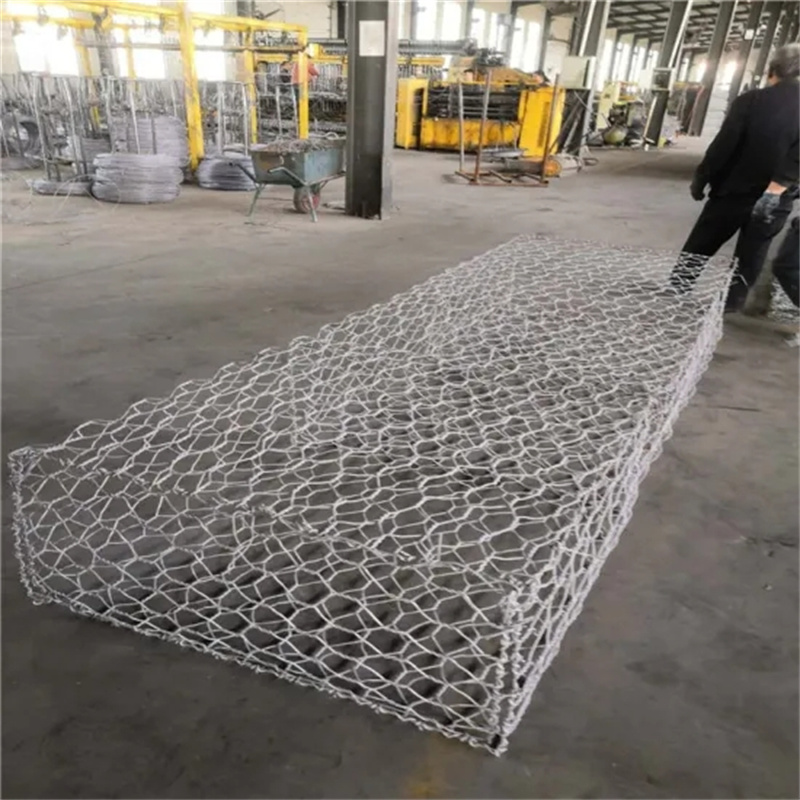Aug . 21, 2024 15:42 Back to list
Building Gabion Walls on Slopes for Enhanced Stability and Erosion Control
The Role of Gabion Walls in Slope Stabilization in China
In recent years, the construction landscape in China has witnessed a significant transformation, particularly in infrastructure development involving natural terrains. One of the most effective solutions being utilized for slope stabilization is the gabion wall. Gabion walls, which are structures made of wire mesh filled with stone, have gained popularity due to their versatility, ecological benefits, and effectiveness in mitigating erosion and landslides on sloped terrains.
Understanding Gabion Walls
Gabion walls consist of baskets or cages filled with rocks, stones, or sometimes recycled materials, forming a sturdy structure that can adapt to the natural terrain. Their design allows them to absorb and dissipate the energy exerted by soil and water movement, making them particularly useful in areas prone to erosion, flooding, and landslides. The flexibility provided by gabion walls makes them suitable for various applications, from rural landscapes to urban construction projects.
The Importance of Slope Stabilization
In China, rapid urbanization and infrastructure development have led to an increase in construction activities on slopes and hillsides. This, in turn, poses significant risks such as soil erosion, which can result in property damage and loss of life. Slope stabilization is essential not only for protecting infrastructure but also for ensuring the safety of local communities. Gabion walls serve as an effective solution in these scenarios by providing a robust barrier against soil erosion and slope failure.
Ecological Benefits
china gabion wall on a slope

Beyond engineering benefits, gabion walls contribute positively to the environment. The use of natural stones in their construction helps to integrate these structures into the landscape, minimizing visual pollution. Moreover, gabion walls can promote ecological balance; over time, vegetation can grow within and around the walls, providing habitats for wildlife, enhancing biodiversity, and further stabilizing the soil. This natural approach to construction aligns with China's commitment to sustainable development and ecological preservation.
Installation and Maintenance
Installing gabion walls involves several steps, including site preparation, framework assembly, and filling the cages with stones. This process is relatively straightforward, and the materials used are often locally sourced, reducing transportation costs and the overall environmental impact. Once in place, gabion walls require minimal maintenance, making them a cost-effective solution in the long run. Regular inspections to check for wear and tear, as well as vegetation management, may be advisable to ensure their longevity and effectiveness.
Challenges and Considerations
Despite their numerous benefits, there are challenges associated with using gabion walls for slope stabilization in China. For instance, the selection of appropriate materials is crucial; poorly chosen stones may displace or degrade over time. Additionally, local geological conditions should be thoroughly assessed before construction to ensure that gabion walls can effectively handle the specific challenges presented by each slope. Collaboration with geotechnical experts and environmental engineers can aid in addressing these concerns.
Conclusion
Gabion walls represent a practical and environmentally friendly solution for slope stabilization in China amidst ongoing urban development pressures. Their ability to effectively mitigate erosion, support local ecosystems, and require minimal maintenance makes them an attractive option for engineers and planners. As China continues to advance its infrastructure projects, incorporating such sustainable practices can ensure both the safety of communities and the protection of the natural landscape for future generations.
-
Visualizing Gabion 3D Integration in Urban Landscapes with Rendering
NewsJul.23,2025
-
The Design and Sustainability of Gabion Wire Mesh Panels
NewsJul.23,2025
-
The Acoustic Performance of Gabion Sound Barriers in Urban Environments
NewsJul.23,2025
-
Mastering the Installation of Galvanized Gabion Structures
NewsJul.23,2025
-
Gabion Boxes: Pioneering Sustainable Infrastructure Across the Globe
NewsJul.23,2025
-
Custom PVC Coated Gabion Boxes for Aesthetic Excellence
NewsJul.23,2025
-
Installation Tips for Gabion Wire Baskets in Erosion Control Projects
NewsJul.21,2025






